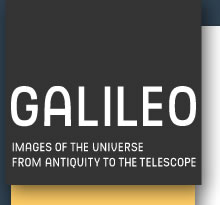


Galileo conducted his resolute battle in favor of Copernicus' theory in a number of memorable works based on sophisticated mathematical reasoning, and on a penetrating analysis of the results of his intense observation of the heavens through his telescopes.
Galileo's telescopes, which rapidly reached a magnification of 20, consisted of two lenses (one concave and one convex) and had a very narrow field of view. He could never accommodate the whole Moon in the field. Also, spherical and chromatic aberration had a negative impact on viewing quality. Yet despite these limitations, Galileo was able to acquire information through the use of his telescopes that was nothing short of revolutionary. In the decades that followed, other skilled craftsmen both in Italy and in the rest of Europe made significant improvements in expanding the telescope's field of view and in perfecting the quality of the lenses used, introducing optics composed of several lenses to boost magnifying power. Attempts were also made to manufacture binocular instruments, but results were unsatisfactory. It wasn't until the middle of the 17th century that improvements in the telescope allowed scientists to embark upon a second round of major astronomical discoveries.